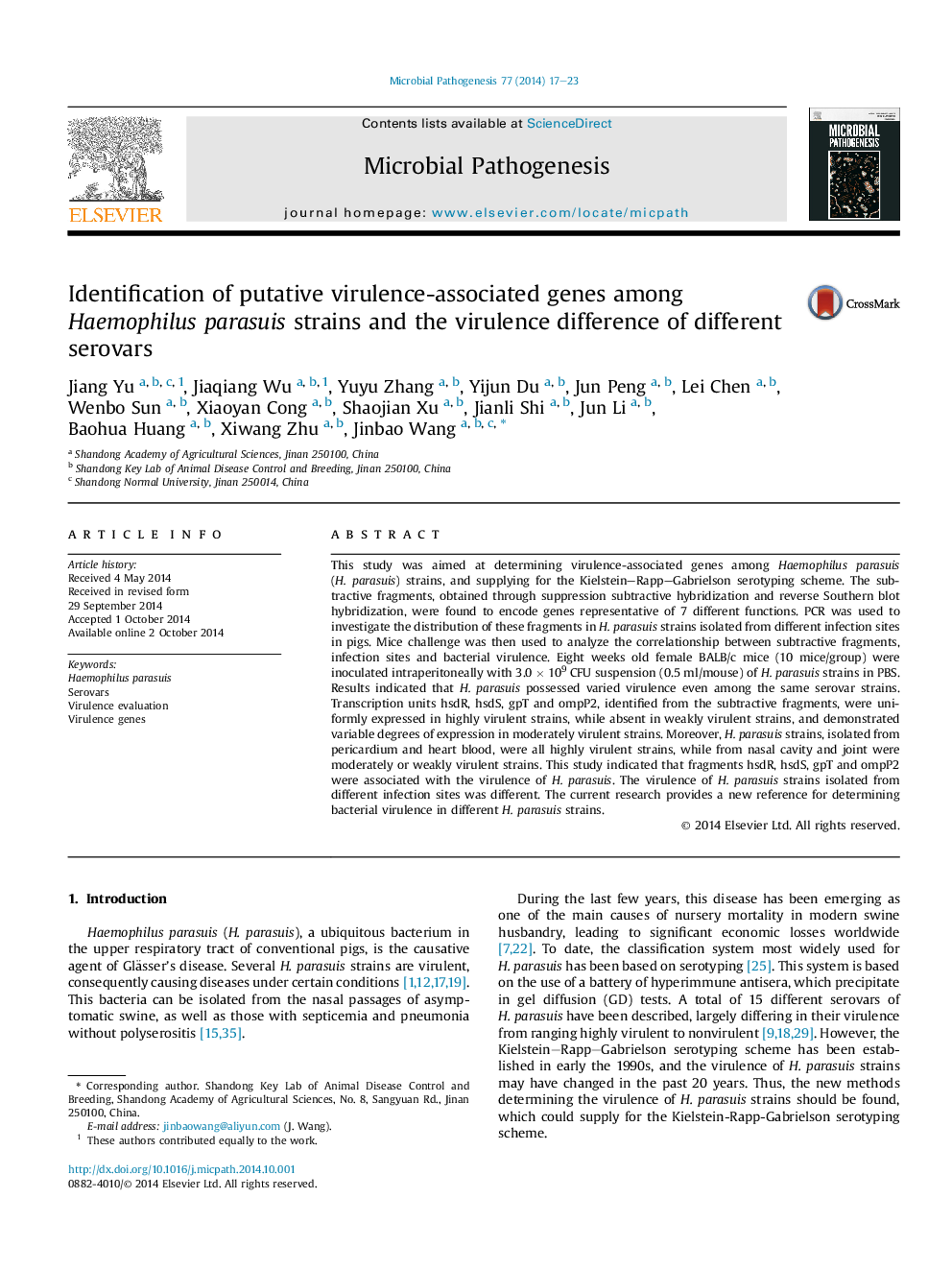| Article ID | Journal | Published Year | Pages | File Type |
|---|---|---|---|---|
| 6136224 | Microbial Pathogenesis | 2014 | 7 Pages |
Abstract
This study was aimed at determining virulence-associated genes among Haemophilus parasuis (H. parasuis) strains, and supplying for the Kielstein-Rapp-Gabrielson serotyping scheme. The subtractive fragments, obtained through suppression subtractive hybridization and reverse Southern blot hybridization, were found to encode genes representative of 7 different functions. PCR was used to investigate the distribution of these fragments in H. parasuis strains isolated from different infection sites in pigs. Mice challenge was then used to analyze the correlationship between subtractive fragments, infection sites and bacterial virulence. Eight weeks old female BALB/c mice (10 mice/group) were inoculated intraperitoneally with 3.0 Ã 109 CFU suspension (0.5 ml/mouse) of H. parasuis strains in PBS. Results indicated that H. parasuis possessed varied virulence even among the same serovar strains. Transcription units hsdR, hsdS, gpT and ompP2, identified from the subtractive fragments, were uniformly expressed in highly virulent strains, while absent in weakly virulent strains, and demonstrated variable degrees of expression in moderately virulent strains. Moreover, H. parasuis strains, isolated from pericardium and heart blood, were all highly virulent strains, while from nasal cavity and joint were moderately or weakly virulent strains. This study indicated that fragments hsdR, hsdS, gpT and ompP2 were associated with the virulence of H. parasuis. The virulence of H. parasuis strains isolated from different infection sites was different. The current research provides a new reference for determining bacterial virulence in different H. parasuis strains.
Related Topics
Life Sciences
Immunology and Microbiology
Microbiology
Authors
Jiang Yu, Jiaqiang Wu, Yuyu Zhang, Yijun Du, Jun Peng, Lei Chen, Wenbo Sun, Xiaoyan Cong, Shaojian Xu, Jianli Shi, Jun Li, Baohua Huang, Xiwang Zhu, Jinbao Wang,
